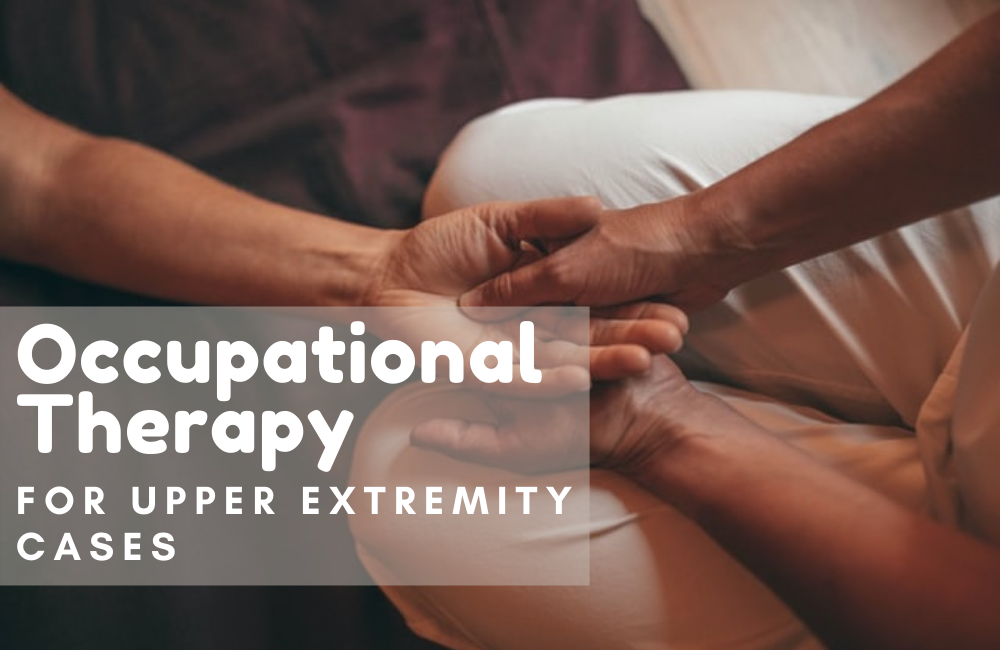When it comes to occupational therapy, healthcare specialists often focus on providing rehabilitation for their patients experiencing a wide array of upper extremity cases. It involves injuries with the arms, hands, shoulders, elbows, and wrists.
A huge portion of certified hand therapists is called occupational therapy experts. If you’re experiencing an upper extremity condition, you can get help from a general rehabilitation center, specialized hand clinic, or other healthcare facilities that provide special assistance.
Through occupational therapy focusing on upper extremity rehabilitation, you can expect to get better over time and go back to accomplishing your daily routine. In the meantime, keep reading below to find out what to know about occupational therapy and upper extremity.
What to Expect from Occupational Therapy
People with upper extremity disabilities can have a challenging time performing their day-to-day activities because their movements are limited due to their injuries. Since you need to use your arm or hands every day, being unable to do so correctly comes with difficulties.
Through the aid of occupational therapists, their educational background on psychosocial development and pathology can help patients like you acquire a closer look at your situation. Their knowledge includes knowing the short and long-term impact of upper extremity disorders on your life.
Therapists are also trained to understand a person’s mental health and its connection to their upper extremity dysfunctions. They develop the skills to understand each patient’s physical, mental, and emotional needs and build a treatment and rehabilitation program accordingly.
Importance of Occupational Therapy Exams
The first time you undergo an occupational therapy assessment, you will receive a comprehensive approach centered on your needs as a patient. The evaluation will tackle your musculoskeletal, sensory, vascular, skin, and connective tissues, as well as your medical history.
In addition, an occupational therapist will talk to you about underlying factors, such as psychosocial, environmental, and more, that could impact the results of your rehabilitation. Your home and work life are also considered to fully understand when you can expect to get better and go back to your routine.
Kinds of Upper Extremity Conditions and Injuries
Occupational therapists providing rehabilitation handle an array of upper extremity disabilities that usually involve the hand, wrist, elbow, shoulder, and joints. The following are the most common types of cases:
- Amputations
- Arthritis and rheumatic disorders
- Congenital problems
- Crush injuries
- Dislocations
- Ligament injuries
- Muscle strains
- Nerve injuries
- Neuromuscular pathologies
- Replantation and revascularization
- Tendon injuries
- Thermal and electrical injuries
- Wounds and scars
Ways to Treat Upper Extremity Cases
Through occupational therapy and rehabilitation, you can rest assured that a professional will help address your needs, starting with providing a personalized program to improve your recovery. The following are ways to treat your disorder:
- Therapeutic practices
- Orthosis design, fabrication, fitting, and training
- Joint protection and energy modification
- Sensory re-education
- Mirror therapy
- Scar management
- Pain management
- Work conditioning or hardening
- Training in activities of daily living
- Education for post-surgical or post-injury safety
Conclusion
Occupational therapy involving rehabilitation is more than managing a patient’s upper extremity conditions—it’s also about tackling other primary needs to help them function better on a daily basis. Knowing what to expect from occupational therapy, the importance of exams, the kinds of injuries, and how to treat them are essential knowledge in understanding what you’re going through. If you or your loved one requires home health care to manage upper extremity conditions, it’s best to know what you’re signing up for to understand the recovery period better.
Are you looking for a hospice near you to help with your loved ones? Bridge Home Health & Hospice offers home-based patient care services led by trained clinicians and therapists in California. Get in touch with us today to learn about our comprehensive care programs!

